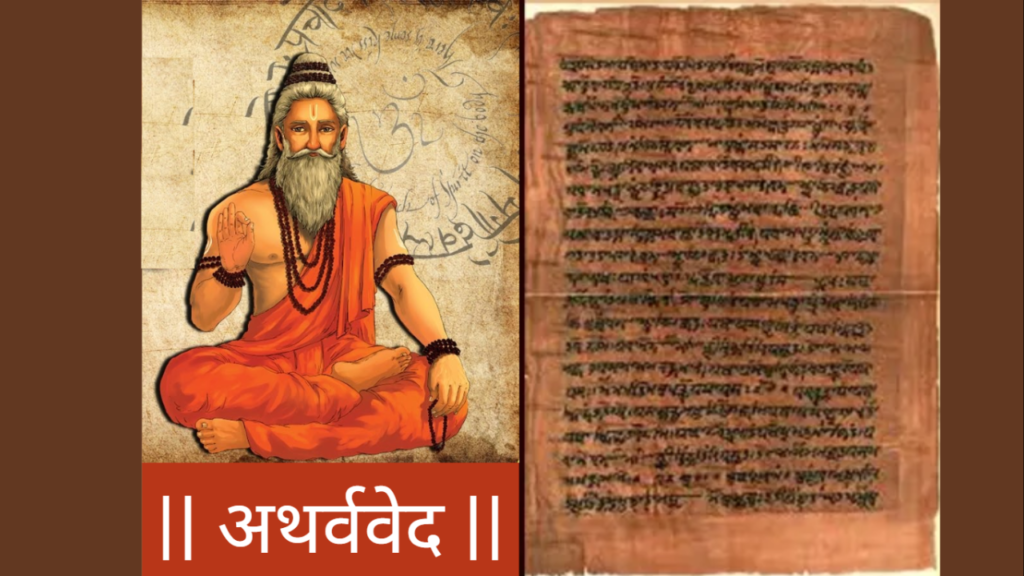This article provides a comprehensive overview of the four Vedas — Rigveda, Samaveda, Yajurveda, and Atharvaveda. It explains why these Vedas are significant from a religious perspective and how they have deeply influenced Indian culture and society. Curious to know why Vedic knowledge is still relevant today? This article offers a profound insight into that very question.
Table of Contents
What Are the Vedas?
The Vedas are the most ancient and important heritage of Indian religion, culture, and knowledge. They are referred to as “Shruti,” meaning divine knowledge that was heard and experienced by sages through meditation, penance, and spiritual realization. The Vedas are not just religious texts; they are the intellectual, cultural, and philosophical foundation of Indian civilization.
Regarded as the oldest and most fundamental scriptures of Sanatan Dharma, the Vedas were composed during the Vedic period (approximately 1500–1200 BCE). The word “Veda” is derived from Sanskrit and means “knowledge” or “source of wisdom.” The four Vedas — Rigveda, Samaveda, Yajurveda, and Atharvaveda — are considered the cornerstone of Hindu religion and represent the religious, spiritual, and cultural traditions of Hinduism.
These four Vedas form the spiritual and cultural foundation of Indian civilization. They shed light on various aspects of life including religion, philosophy, science, music, medicine, and social norms. Their teachings go beyond temples and rituals, offering guidance for a complete way of life, ethics, and community building.
Rigveda: The Oldest Veda
Rigveda is the oldest and most important of the four Vedas. It consists of 10 mandalas (books) and 1,028 hymns. The Rigveda contains praises for various deities and the magnificence of nature. It glorifies deities such as Surya (Sun), Agni (Fire), Vayu (Wind), and Indra.

While it is a religious text, the Rigveda also provides guidance across every aspect of life. Its hymns not only include prayers but also vivid descriptions of the beauty of nature, fundamental forces of life, and elements of the cosmos. Its greatest strength lies in offering spiritual and ethical guidance along with religious teachings.
The Rigveda details rituals, yajnas (sacrifices), and spiritual practices that continue to shape Hindu religious life today. Culturally, the Rigveda is rich in references to family systems, marriage rituals, social ideals, and core values of life. The roots of classical Indian literature, music, and art can also be traced to the Rigveda. That is why it is regarded not just as a scripture, but as the very soul of Indian civilization.
Samaveda: The Veda of Music and Devotion
Samaveda is known as the “Veda of Music” because it is composed specifically of chants and hymns that are meant to be sung melodiously. It contains a total of 1,875 verses, most of which are borrowed from the Rigveda but are presented in musical patterns.

Samaveda is primarily used in rituals and religious ceremonies where hymns are chanted in a melodic manner. Its main purpose is to integrate music and devotion into religious practices so that the devotee’s consciousness is elevated and devotion to the divine is deepened.
Through melody and rhythm, the Samaveda creates an emotional and spiritual ambiance that enhances the impact of rituals. It is considered the foundation of Indian classical music and is also the original source of the performing arts such as music, drama, and dance. The traditions of devotional songs, kirtans, and chanting owe much to the influence of the Samaveda.
Yajurveda: The Veda of Sacrifices and Rituals
The Yajurveda focuses on the procedures of yajnas and rituals. It contains 40 chapters and 1,975 mantras, some of which are derived from the Rigveda and Samaveda. It is primarily used during the performance of sacrificial rituals and provides detailed instructions on the methods, mantras, and processes involved in yajnas.

These mantras guide offerings, sacrifices, and all the procedural aspects of ritual worship. Though it borrows some verses from other Vedas, Yajurveda presents them in a functional and procedural format.
In Hinduism, yajnas symbolize surrender to the divine, balance with nature, and inner purification. Yajurveda provides the necessary framework, conduct rules, and rituals for achieving these spiritual objectives. Its application is not limited to spiritual practices but also includes social and family rites such as marriage, sacred thread ceremonies, funerals, and ancestral rites.
The cultural importance of the Yajurveda is evident in the conduct of Hindu religious ceremonies. Because it outlines the procedures of yajnas, it is an inseparable part of Hindu traditions. Significant rituals such as weddings, initiations, and funerals are still conducted according to the instructions given in the Yajurveda.
Atharvaveda: The Veda of Medicine and Mysticism
Atharvaveda is considered the “Veda of Knowledge and Science” because it is directly related to the physical and practical life of ancient Indian society. It contains 20 books and 731 hymns focused on health, medicine, disease prevention, incantations, and remedies to social problems.

It offers information on herbal medicine, diagnosis and treatment of diseases, and is regarded as one of the primary sources of Ayurveda. It also includes mantras and practices intended for mental peace, prosperity, protection, and warding off negative energies.
Culturally, the Atharvaveda contributed to health care practices and social behavior. It describes Ayurvedic healing techniques that are still part of Indian traditional medicine. The Atharvaveda played a key role in shaping public health, protection, and the societal order of ancient times.
The Religious, Cultural, and Everyday Significance of the Vedas
The Vedas are the foundation of Indian religious and cultural identity. They not only guide rituals and ceremonies but also lay the foundation for social values, ethics, and societal structure. The Vedas offer wisdom for every domain of life — religion, philosophy, science, music, medicine, and governance.
From a religious standpoint, the Vedas are immensely significant. They structure the methods of yajna, worship, and spiritual practice, which form the essence of Hindu devotion. They systematized the procedures and mantras for connecting with the divine.
Culturally, the Vedas defined the Indian worldview. These texts laid the foundation of language, literature, lifestyle, medicine, and art. They are not confined to religious observance but present a holistic system of living.
Overall Significance of the Vedas and Their Relevance Today
The Vedas are the bedrock of Indian spirituality and knowledge. Rigveda, Samaveda, Yajurveda, and Atharvaveda are not merely ancient religious texts but the original sources of Indian culture, social structure, and intellectual tradition. These scriptures guided ancient society in matters of religion, science, philosophy, and conduct, and continue to offer direction in all areas of life even today.
Their relevance has not diminished with time; instead, the teachings of the Vedas remain profoundly applicable even in the face of modern-day challenges.

